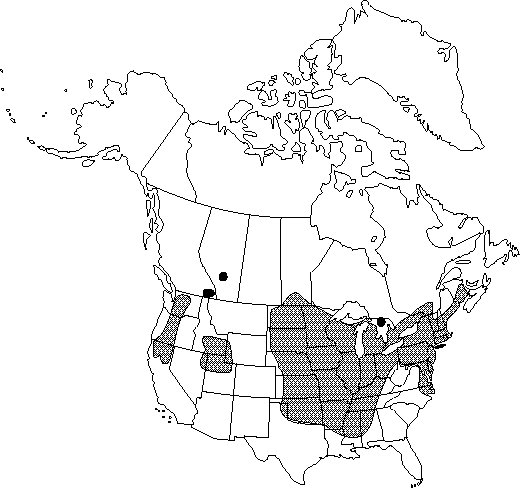FNA>Volume Importer |
FNA>Volume Importer |
| Line 27: |
Line 27: |
| | }}<!-- | | }}<!-- |
| | | | |
| − | --><span class="statement" id="st-d0_s0" data-properties="stem growth form;stem growth form;stem pubescence;stem architecture"><b>Stems </b>floating or prostrate, glabrous, rooting at proximal nodes.</span> <span class="statement" id="st-d0_s1" data-properties="basal leaf presence;cauline leaf-blade shape;cauline leaf-blade shape;cauline leaf-blade shape;cauline leaf-blade shape;cauline leaf-blade shape;cauline leaf-blade shape;cauline leaf-blade shape;cauline leaf-blade shape;cauline leaf-blade shape;cauline leaf-blade shape;cauline leaf-blade shape;cauline leaf-blade shape;cauline leaf-blade shape;cauline leaf-blade shape;cauline leaf-blade shape;cauline leaf-blade shape;cauline leaf-blade shape;cauline leaf-blade shape;cauline leaf-blade shape;cauline leaf-blade shape;cauline leaf-blade shape;cauline leaf-blade shape;cauline leaf-blade shape;cauline leaf-blade shape;base shape;base shape;segment margin shape;segment margin shape;apex shape;apex shape;apex shape"><b>Leaves:</b> basal leaves seldom present, cauline leaf-blades semicircular to reniform, 1-6×-lobed, parted, or dissected 1.2-7.3 × 1.9-10.8 cm, base truncate or cordate, segment margins entire or crenate, apex rounded to filiform.</span> <span class="statement" id="st-d0_s2" data-properties="receptacle pubescence"><b>Flowers:</b> receptacle sparsely hispid;</span> <span class="statement" id="st-d0_s3" data-properties="sepal quantity;sepal orientation;sepal orientation;sepal length;sepal width;sepal pubescence">sepals 5, spreading or weakly reflexed, 5-7 × 3-6 mm, glabrous;</span> <span class="statement" id="st-d0_s4" data-properties="petal atypical quantity;petal quantity;petal length;petal width">petals 5-6 (-14), 7-12 × 5-9 mm;</span> <span class="statement" id="st-d0_s5" data-properties="nectary scale variability;nectary scale shape;nectary scale shape;nectary scale shape;nectary scale shape;nectary scale shape">nectary scale variable, crescent-shaped, funnel-shaped, or flaplike;</span> <span class="statement" id="st-d0_s6" data-properties="style some measurement">style 0.8-1.2 mm.</span> <span class="statement" id="st-d0_s7" data-properties="head shape;head length;head width"><b>Heads </b>of achenes ovoid, 8-10 × 7-8 mm;</span> <span class="statement" id="st-d0_s8" data-properties="achene length;achene width;achene pubescence">achenes 1.8-2.2 × 1.6-2.2 mm, glabrous;</span> <span class="statement" id="st-d0_s9" data-properties="beak shape;beak course;beak some measurement;2n chromosome quantity">beak lanceolate, straight, 1-1.8 mm. <b>2n</b> = 32.</span><!-- | + | --><span class="statement" id="st-undefined" data-properties=""><b>Stems </b>floating or prostrate, glabrous, rooting at proximal nodes. <b>Leaves</b>: basal leaves seldom present, cauline leaf blades semicircular to reniform, 1-6×-lobed, parted, or dissected 1.2-7.3 × 1.9-10.8 cm, base truncate or cordate, segment margins entire or crenate, apex rounded to filiform. <b>Flowers</b>: receptacle sparsely hispid; sepals 5, spreading or weakly reflexed, 5-7 × 3-6 mm, glabrous; petals 5-6(-14), 7-12 × 5-9 mm; nectary scale variable, crescent-shaped, funnel-shaped, or flaplike; style 0.8-1.2 mm. <b>Heads</b> of achenes ovoid, 8-10 × 7-8 mm; achenes 1.8-2.2 × 1.6-2.2 mm, glabrous; beak lanceolate, straight, 1-1.8 mm. <b>2n</b> = 32.</span><!-- |
| | | | |
| | -->{{Treatment/Body | | -->{{Treatment/Body |
| Line 58: |
Line 58: |
| | |publication year=1818 | | |publication year=1818 |
| | |special status=Endemic;Weedy | | |special status=Endemic;Weedy |
| − | |source xml=https://jpend@bitbucket.org/aafc-mbb/fna-fine-grained-xml.git/src/287ef3db526bd807d435a3c7423ef2df1e951227/V3/V3_1051.xml | + | |source xml=https://jpend@bitbucket.org/aafc-mbb/fna-data-curation.git/src/9216fc802291cd3df363fd52122300479582ede7/coarse_grained_fna_xml/V3/V3_1051.xml |
| | |genus=Ranunculus | | |genus=Ranunculus |
| | |subgenus=Ranunculus subg. Ranunculus | | |subgenus=Ranunculus subg. Ranunculus |
| | |section=Ranunculus sect. Hecatonia | | |section=Ranunculus sect. Hecatonia |
| | |species=Ranunculus flabellaris | | |species=Ranunculus flabellaris |
| − | |2n chromosome quantity=32
| |
| − | |achene length=1.8mm;2.2mm
| |
| − | |achene pubescence=glabrous
| |
| − | |achene width=1.6mm;2.2mm
| |
| − | |apex shape=rounded;filiform
| |
| − | |basal leaf presence=absent
| |
| − | |base shape=cordate;truncate
| |
| − | |beak course=straight
| |
| − | |beak shape=lanceolate
| |
| − | |beak some measurement=1mm;1.8mm
| |
| − | |cauline leaf-blade shape=semicircular;reniform 1-6×-lobed parted or dissected
| |
| − | |head length=8mm;10mm
| |
| − | |head shape=ovoid
| |
| − | |head width=7mm;8mm
| |
| − | |nectary scale shape=flaplike;funnel--shaped;flaplike;funnel--shaped;crescent--shaped
| |
| − | |nectary scale variability=variable
| |
| − | |petal atypical quantity=6;14
| |
| − | |petal length=7mm;12mm
| |
| − | |petal quantity=5;6
| |
| − | |petal width=5mm;9mm
| |
| − | |receptacle pubescence=hispid
| |
| − | |segment margin shape=crenate;entire
| |
| − | |sepal length=5mm;7mm
| |
| − | |sepal orientation=reflexed;spreading
| |
| − | |sepal pubescence=glabrous
| |
| − | |sepal quantity=5
| |
| − | |sepal width=3mm;6mm
| |
| − | |stem architecture=rooting
| |
| − | |stem growth form=prostrate;floating
| |
| − | |stem pubescence=glabrous
| |
| − | |style some measurement=0.8mm;1.2mm
| |
| | }}<!-- | | }}<!-- |
| | | | |
| | -->[[Category:Treatment]][[Category:Ranunculus sect. Hecatonia]] | | -->[[Category:Treatment]][[Category:Ranunculus sect. Hecatonia]] |
Stems floating or prostrate, glabrous, rooting at proximal nodes. Leaves: basal leaves seldom present, cauline leaf blades semicircular to reniform, 1-6×-lobed, parted, or dissected 1.2-7.3 × 1.9-10.8 cm, base truncate or cordate, segment margins entire or crenate, apex rounded to filiform. Flowers: receptacle sparsely hispid; sepals 5, spreading or weakly reflexed, 5-7 × 3-6 mm, glabrous; petals 5-6(-14), 7-12 × 5-9 mm; nectary scale variable, crescent-shaped, funnel-shaped, or flaplike; style 0.8-1.2 mm. Heads of achenes ovoid, 8-10 × 7-8 mm; achenes 1.8-2.2 × 1.6-2.2 mm, glabrous; beak lanceolate, straight, 1-1.8 mm. 2n = 32.
Phenology: Flowering late spring–summer (May–Aug).
Habitat: Shallow water or drying mud
Elevation: 0-1500 m
Distribution
Alta., B.C., Man., N.B., Ont., Que., Ala., Ark., Calif., Conn., Del., Idaho, Ill., Ind., Iowa, Kans., Ky., La., Maine, Md., Mass., Mich., Minn., Miss., Mo., Nebr., Nev., N.H., N.J., N.Y., N.C., N.Dak., Ohio, Okla., Oreg., Pa., R.I., S.Dak., Tenn., Tex., Utah, Vt., Va., Wash., Wis., Wyo.
Discussion
The Fox tribes used Ranunculus flabellaris as a cold remedy and a respiratory aid (D. E. Moerman 1986).
Selected References
None.
